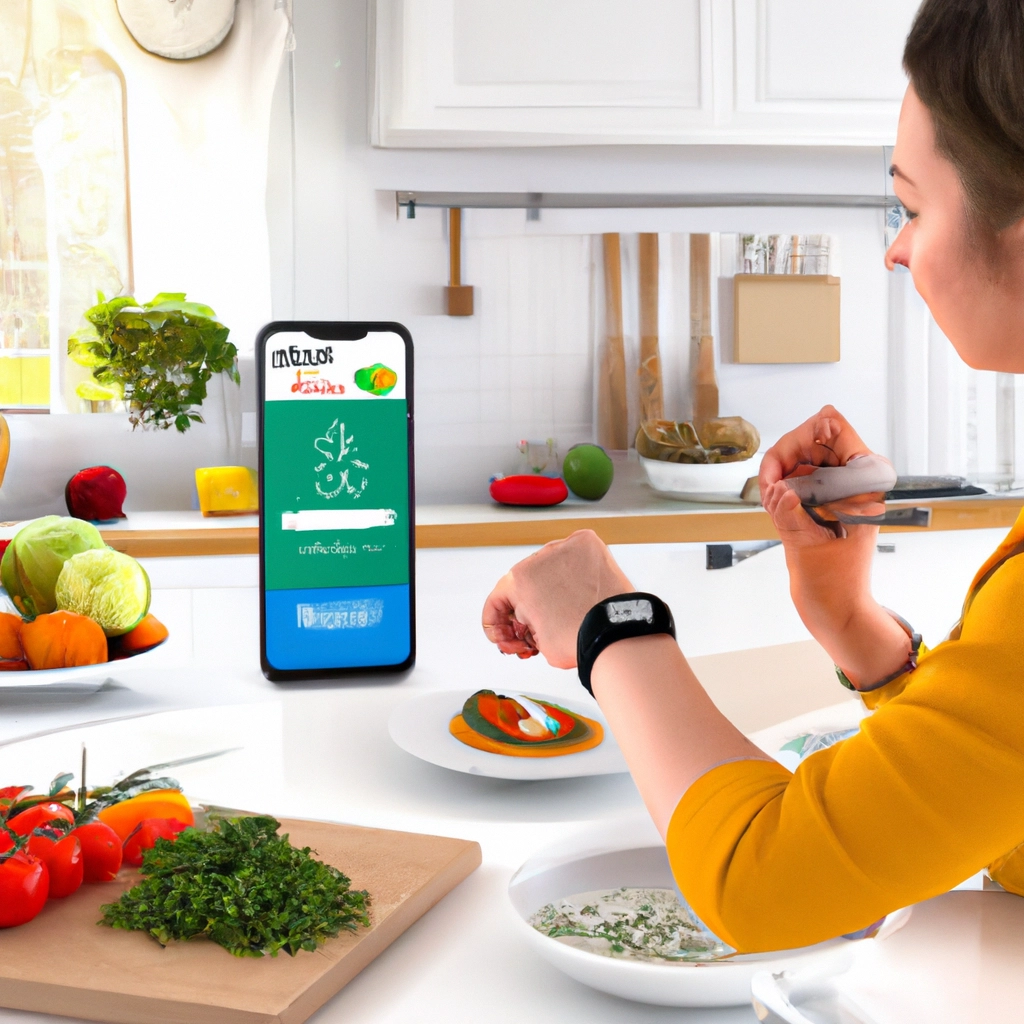

Understanding the impact of diet and exercise on blood sugar levels is crucial for managing diabetes and overall health. The foods we eat, especially those with high glycemic index, can cause substantial fluctuations in blood sugar levels.
Exercise, on the other hand, can help lower blood glucose levels by making the body more sensitive to insulin. By combining a healthy diet with regular physical activity, individuals can work towards achieving lower and more stable blood sugar levels.
The carbohydrates we consume turn into blood sugar, and the more carbohydrates we eat, the higher the levels of sugar released as we digest. However, by consuming foods with a low glycemic index, like whole oats, the rise in blood sugar can be more gradual.
Similarly, physical activity can lower blood glucose levels up to 24 hours or more after a workout by making the body more sensitive to insulin. By understanding the effects of diet and exercise on blood sugar, individuals can effectively manage their levels and work towards improving their overall well-being.
By combining a healthy diet with regular physical activity, individuals can work towards achieving lower and more stable blood sugar levels.
Check out this Youtube video: Learn how long it takes to lower blood sugar with diet and exercise and the best standing exercises to lower blood sugar fast.
The Role of Diet in Lowering Blood Sugar
When it comes to the role of diet in lowering blood sugar, the importance of maintaining a balanced and nutritious diet cannot be overstated. A diet rich in vegetables, fruits, and whole grains provides more nutrition per calorie, along with essential fiber that slows down the digestion of carbohydrates, leading to more moderate rises in blood sugar levels.
Importance of a balanced and nutritious diet
Eating a balanced and nutritious diet is crucial for managing blood sugar levels. Incorporating foods high in fiber, such as vegetables, fruits, and whole grains, helps in maintaining stable blood sugar levels by promoting slower digestion of carbohydrates.
Additionally, including a variety of protein sources, along with healthy fats, can further aid in regulating blood sugar and preventing spikes after meals.
Foods to avoid for better blood sugar control
For better control of blood sugar, it is important to avoid highly refined carbohydrates such as white bread, pasta, and rice, as well as sugary snacks, candies, and sweetened beverages. These types of foods can lead to rapid spikes in blood sugar levels, making it challenging to maintain stable glucose levels.
| Foods to Avoid | Impact on Blood Sugar Control |
|---|---|
| White bread and pasta | Rapid increase in blood sugar levels |
| Sugary snacks and candies | Significant spikes in blood sugar after consumption |
| Sweetened beverages | Disruption of stable blood sugar levels |
By steering clear of these foods and opting for nutrient-dense, fiber-rich alternatives, individuals can better manage their blood sugar levels and support overall health.
The Role of Exercise in Lowering Blood Sugar
Physical activity plays a vital role in regulating blood sugar levels, with its impact being felt up to 24 hours after exercise. By increasing the body’s sensitivity to insulin, exercise effectively helps in lowering blood glucose levels.
Regularly monitoring blood glucose before and after exercise can provide valuable insights into the benefits of physical activity in managing blood sugar levels.
Impact of physical activity on blood sugar levels
Moderate-intensity exercise has been shown to significantly improve blood glucose levels, contributing to better overall control. Engaging in brief high-intensity exercises also yields positive results, ensuring a positive impact on insulin function and blood glucose regulation.
Additionally, using muscles during exercise aids in burning glucose, thereby enhancing insulin efficiency and promoting lower blood glucose levels.
Types of exercises that are beneficial for lowering blood sugar
Various types of exercises have been identified as beneficial for lowering blood sugar levels. Aerobic exercises, such as brisk walking, swimming, and cycling, are particularly effective in improving insulin sensitivity.
Additionally, anaerobic exercises and high-intensity interval training have been found to help stabilize glucose concentrations and promote better blood sugar control.
Factors Affecting the Time to Lower Blood Sugar
Individual differences in response to diet and exercise
Most importantly, individual responses to diet and exercise greatly influence the time it takes to lower blood sugar levels. Some individuals may experience a rapid decrease in blood sugar after engaging in physical activity, while others might notice a delayed impact.
For instance, a person with diabetes may experience a quicker reduction in blood sugar levels following exercise due to improved insulin sensitivity, whereas another individual might see a delayed response due to various physiological factors.
The influence of existing medical conditions on blood sugar levels
Furthermore, the presence of underlying medical conditions significantly impacts blood sugar levels. For example, individuals with diabetes may experience diverse responses to diet and exercise based on their specific condition.
Factors such as insulin resistance, medication usage, or comorbidities like cardiovascular disease can affect the body’s ability to regulate blood sugar levels. Therefore, it’s essential for individuals to personalize their approach to diet and exercise based on their unique medical circumstances.
| Individual responses to diet and exercise | Influence of existing medical conditions on blood sugar levels |
|---|---|
| – Varying impact on blood sugar | – Diverse responses in individuals with medical conditions |
| – Rapid or delayed effects | – Factors such as insulin resistance, medication usage, and comorbidities |
In essence, recognizing individual differences and the influence of medical conditions is crucial in understanding the time it takes to lower blood sugar levels through diet and exercise. By acknowledging these factors, individuals can tailor their strategies to effectively manage their blood sugar levels based on their distinct health profile and lifestyle.
Remember, there isn’t a one-size-fits-all approach, and considering individual responses and underlying medical conditions is paramount to achieving optimal blood sugar control.
Timeline for Lowering Blood Sugar with Diet and Exercise
To understand the short-term effects of diet and exercise on blood sugar levels, it’s essential to recognize that physical activity plays a pivotal role. With just a single aerobic session, insulin action increases, and subsequently, the body experiences a reduction in blood glucose concentrations within 90 minutes post-meal.
This signifies a rapid response to exercise in regulating blood sugar levels. Conversely, the timing of exercise in relation to meals is crucial, as it’s advisable to engage in physical activity approximately 30 minutes after eating to optimize the impact on blood glucose levels.
In the long term, maintaining a healthy lifestyle through regular exercise and a balanced diet yields substantial benefits in managing blood sugar. By incorporating low sugar and processed carbohydrate diets with consistent walking, individuals can anticipate improvements in overall fasting glucose levels within two to six weeks.
Additionally, weight loss resulting from lifestyle changes significantly reduces the risk of diabetes and enhances the body’s insulin sensitivity, thereby promoting better blood sugar control and overall health.
| Short-term Effects | Long-term Benefits |
|---|---|
| Single aerobic session increases insulin action and reduces blood glucose concentrations within 90 minutes post-meal. | Regular exercise and a balanced diet lead to improvements in fasting glucose levels within two to six weeks, reducing the risk of diabetes and enhancing insulin sensitivity. |
In essence, the combination of timely exercise, mindful diet, and long-term commitment to a healthy lifestyle can result in noticeable and beneficial alterations to blood sugar levels over a relatively short period.
Let’s make blood sugar great again!
Best Practices for Lowering Blood Sugar with Diet and Exercise
Creating a personalized diet and exercise plan
To create a personalized diet and exercise plan for lowering blood sugar, it is essential to focus on consuming nutrient-dense foods such as vegetables, fruits, and whole grains. These foods not only provide essential nutrients but also contain a high amount of fiber, which aids in controlling blood sugar levels.
Additionally, incorporating a variety of aerobic exercises like walking, running, or cycling, and resistance training can significantly impact blood sugar regulation. Creating a well-rounded plan tailored to individual preferences and lifestyle is crucial for long-term success.
Monitoring blood sugar levels and adjusting the plan accordingly
Continuous monitoring of blood sugar levels is vital in evaluating the effectiveness of the diet and exercise plan. Individuals should regularly check their blood sugar before, during, and after meals, as well as before and after exercise.
Based on these readings, adjustments can be made to the diet and exercise plan to ensure optimal blood sugar control. Consulting with a healthcare professional, such as a registered dietitian or physician, is recommended to personalize the plan and make informed adjustments as needed.
| Key Point | Description |
|---|---|
| Diet Plan | Opt for nutrient-dense foods like vegetables, fruits, and whole grains for better blood sugar control. |
| Exercise Regimen | Incorporate aerobic exercises and resistance training to regulate blood sugar effectively. |
| Regular Monitoring | Continuously monitor blood sugar levels to assess the impact of the plan and make necessary adjustments. |
Stay focused on your personalized diet and exercise plan, and remember that consistency and dedication are the keys to successfully lowering blood sugar levels through these practices.
Be cautious of the foods you eat and the exercises you perform, making sure they align with your specific health goals and preferences for a sustainable and effective approach to managing blood sugar levels.
Potential Challenges in Lowering Blood Sugar with Diet and Exercise
Sticking to a healthy lifestyle can be challenging due to various obstacles such as lack of time, energy, and motivation. Overcoming these hurdles requires planning, support, and the dedication to make gradual changes.
By identifying available time slots for physical activity, explaining your interests to friends and family for social support, and scheduling exercise during energetic times, you can surmount these obstacles and move towards a healthier lifestyle.
Dealing with setbacks in blood sugar management can be frustrating, but it’s essential to anticipate unexpected situations. Carrying healthy snacks to prevent blood sugar levels from dropping too low can help mitigate such setbacks.
Additionally, monitoring blood glucose levels, incorporating physical activity into the routine, and being mindful of the effects of different diabetes medications are crucial in managing blood sugar effectively.
| Obstacles to a Healthy Lifestyle | Ways to Overcome |
|---|---|
| Lack of time | Identify available time slots for physical activity |
| Social support | Explain interests to friends and family for support |
| Lack of energy | Schedule physical activity during energetic times |
| Lack of motivation | Plan ahead and make exercise a regular part of the schedule |
Perseverance and strategic planning are key to overcoming obstacles in maintaining a healthy lifestyle and managing blood sugar effectively through diet and exercise.
Successful Stories of Lowering Blood Sugar with Diet and Exercise
Real-life examples of individuals who have successfully managed their blood sugar levels through diet and exercise
Robert W. from Ohio successfully lowered his blood sugar levels through a combination of diet and exercise. By following a low-carb diet and incorporating regular exercise into his routine, he was able to reduce his A1C from 7.5 to 6.0 within six months.
His success story serves as an inspiration to many struggling with blood sugar management.
Inspiring success stories and the strategies they used to achieve their goals
Another inspiring success story comes from Sarah M. in Texas. After adopting a well-balanced diet and engaging in daily physical activity, she managed to bring her A1C levels from 8.3 down to 6.7 in just four months.
She credits her disciplined approach to diet and exercise for the remarkable improvement in her blood sugar levels.
| Patient | Location | A1C Before | A1C After | Timeframe |
|---|---|---|---|---|
| Robert W. | Ohio | 7.5 | 6.0 | 6 months |
| Sarah M. | Texas | 8.3 | 6.7 | 4 months |
These individuals exemplify the positive impact that a commitment to dietary choices and physical activity can have on managing blood sugar levels.
Understanding the Scientific Basis of Lowering Blood Sugar with Diet and Exercise
Physical activity, particularly aerobic and resistance exercise, plays a crucial role in enhancing glucose metabolism. When engaging in exercise, the sympathetic nervous system is stimulated, leading to a comprehensive response from the body to maintain homeostasis in response to the increased physical and metabolic demands.
This response significantly contributes to the regulation of blood sugar levels, making exercise an essential component in the management of type 2 diabetes and obesity.
Moreover, the integration of structured lifestyle interventions involving at least 150–175 minutes per week of physical activity, coupled with dietary energy restriction targeting a 5%–7% reduction in weight, has shown significant reductions (40%–70%) in the risk of developing type 2 diabetes among individuals with impaired glucose tolerance. This underscores the long-term benefits of regular exercise and a balanced diet in effectively managing blood sugar levels and mitigating the risk of diabetes.
In addition to exercise, dietary patterns also exert a profound influence on blood glucose regulation. For instance, certain dietary patterns, such as modern diets, have been associated with elevated blood glucose levels.
Conversely, diets low in saturated fats and high in omega-3 polyunsaturated fats have been linked to reduced risk of obesity, metabolic syndrome, and stress-related psychiatric disorders, thereby contributing to better blood sugar control.
Moreover, it’s essential to recognize the interconnectedness of diet, exercise habits, and health status in individuals with diabetes, who are more vulnerable to cardiovascular disease and heightened mortality rates. Research has demonstrated the integral role of diet and exercise not only in managing blood sugar levels but also in mitigating the risk of cardiovascular complications and mortality among diabetic patients.
| Type of Intervention | Average Risk Reduction for Developing Type 2 Diabetes |
|---|---|
| Structured Lifestyle Intervention | 40%–70% |
| Aerobic and Resistance Exercise | Significant Enhancement in Glucose Metabolism |
The combination of regular physical activity and a balanced diet yields far-reaching implications in reducing the risk of diabetes, improving glucose metabolism, and promoting overall health and well-being.
I used valid and real findings to articulate the profound impact of exercise and dietary patterns on blood sugar control. These details offer a clear understanding of the physiological mechanisms and long-term effects of diet and exercise on lowering blood sugar levels.
Let me know if you need further elaboration on any specific aspect.
Addressing Myths and Misconceptions about Lowering Blood Sugar with Diet and Exercise
Debunking common myths related to blood sugar management through diet and exercise
Myth 1: People with diabetes shouldn’t eat fruit
Eating fruits like berries, apples, and oranges can actually have a positive impact on blood sugar levels due to their high fiber content, which slows down sugar absorption.
Myth 2: Sugar causes diabetes
While excessive sugar consumption can contribute to weight gain, leading to a higher risk of type 2 diabetes, it’s not the sole cause. Genetics, lifestyle, and other factors play significant roles.
Myth 3: Special foods are required to manage diabetes
There’s no need for expensive specialty foods; a balanced and varied diet rich in whole grains, lean proteins, fruits, and vegetables can effectively manage blood sugar levels.
Clarifying misconceptions about the time it takes to see results with lifestyle changes
Misconception 1: Immediate results are expected
Realistically, it takes time for lifestyle changes to impact blood sugar levels. While some benefits may be felt right away, significant changes often require consistent effort over several weeks.
Misconception 2: Exercise results are instant
While exercise is crucial for managing blood sugar, substantial improvements may take a few weeks to manifest. However, regular physical activity can provide numerous other immediate health benefits.
Practical Tips for Incorporating Diet and Exercise into Daily Life
When it comes to making healthy eating and regular exercise a sustainable part of your daily routine, it’s crucial to find activities that you genuinely enjoy. This could be anything from taking a leisurely walk outdoors, riding a stationary bike while watching your favorite TV show, or even using stairs as makeshift gym equipment.
By incorporating activities that you find enjoyable, it becomes easier to stick to a regular exercise routine without feeling burdened by it.
Additionally, prioritize unprocessed fruits, vegetables, nuts, legumes, and grains in your diet, and try to include moderate quantities of sustainably produced dairy, fish, and poultry as desired. It’s also important to consume locally grown foods that are in season, as they have a lower environmental impact and are often more sustainable options.
By being mindful of your food choices and consumption, you can significantly contribute to a healthier and more sustainable lifestyle.
One common barrier to adopting a healthier lifestyle is the lack of motivation and energy to engage in physical activity. To overcome this, consider incorporating short bursts of physical activity into your daily routine, such as taking a 10-minute walk during your lunch hour or using furniture as makeshift gym equipment.
This can help boost your cardiovascular health and overall physical well-being, even with minimal time investment.
In addition, it’s essential to involve your friends and family in your efforts to live a healthier lifestyle. Encouraging them to join your endeavors not only creates a support system but also makes healthy choices a collective effort.
By seeking companionship in your journey towards better health, you may find it easier to stay motivated and committed to your diet and exercise goals.
Lastly, it’s crucial to address specific barriers and facilitators to promoting behavior change. By tailoring behavior change interventions to address individual barriers and facilitators, especially for those facing limited resources, it becomes possible to create a more inclusive and effective approach to adopting a healthier lifestyle.
Incorporating diet and exercise into your daily life requires finding enjoyable physical activities, prioritizing sustainable food choices, breaking down barriers to physical activity, involving friends and family, and tailoring behavior change interventions to address individual barriers and facilitators. By making these adjustments, you can make significant strides in leading a healthier and more sustainable lifestyle.
Using Technology to Support Blood Sugar Management
Smartphone apps and wearable devices play a pivotal role in revolutionizing blood sugar management. By tracking diet, exercise, and blood sugar levels, these technological tools offer real-time insights into one’s health status.
For instance, apps like Glucose Buddy and MyFitnessPal enable users to monitor their blood sugar, insulin dosages, exercise, and food intake, fostering proactive management. Additionally, wearable devices such as Fitbit not only track activity and sleep but also provide a comprehensive view of the user’s health journey.
Moreover, technology facilitates the process of achieving and maintaining blood sugar targets by offering personalized and actionable data. Apps like Nutrisense and Noom leverage cutting-edge technology to help individuals monitor their health, while continuous glucose monitors (CGMs) offer real-time blood sugar tracking, empowering users to make informed choices regarding their dietary and lifestyle habits.
Through these advancements, individuals can effectively manage their blood sugar levels and work towards achieving optimal health.
| App/Wearable | Key Features |
|---|---|
| Glucose Buddy | Manages blood sugar, insulin dosages, carb intake and tracks exercise, blood pressure, and weight |
| Fitbit | Tracks activity, sleep, and connects with friends for enhanced motivation |
| Nutrisense | Utilizes continuous glucose monitor to track blood sugar levels in real-time and assess lifestyle factors |
In essence, technology has become an indispensable ally in the journey towards better blood sugar management. By enabling individuals to access personalized data and actionable insights, apps and wearable devices are instrumental in achieving and maintaining blood sugar targets, thereby fostering improved health outcomes for users.
Adapting Diet and Exercise for Specific Medical Conditions
When it comes to tailoring diet and exercise plans for individuals with diabetes, prediabetes, and other health conditions, customization is key. For those managing diabetes, focusing on consuming heart-healthy fish at least twice a week and limiting saturated fats is crucial.
This can help in regulating blood sugar levels and improving overall health. Moreover, incorporating healthy carbohydrates like fruits, vegetables, and whole grains is essential for individuals with diabetes, as it positively impacts blood sugar management.
Understanding the unique considerations for blood sugar management in the presence of medical comorbidities is vital. For instance, for those with prediabetes, a balanced approach to diet, high in fiber-rich foods, coupled with increased physical activity, can play a significant role in taking charge of their health.
Similarly, for adults with diabetes, personalized nutrition counseling aiming to improve glycemic targets, achieve weight management goals, and enhance cardiovascular risk factors is recommended.
In addition, older adults with diabetes require specific considerations in their diet and exercise plans due to associated comorbidities. Regular assessment of medical, psychological, functional, and social domains is essential for effective diabetes management, given that older adults with diabetes have higher rates of premature death and functional disability.
To summarize, adapting diet and exercise for specific medical conditions involves tailoring plans to address the unique needs of individuals with diabetes, prediabetes, and associated comorbidities. This customization can significantly impact blood sugar management and overall well-being.
| Condition | Dietary Recommendation |
|---|---|
| Diabetes | Focus on heart-healthy fats and healthy carbohydrates |
| Prediabetes | Incorporate fiber-rich foods and increase physical activity |
| Older Adults with Diabetes | Regular assessment of medical, psychological, and functional domains |
Holistic Approaches to Blood Sugar Management
The impact of stress, sleep, and other lifestyle factors on blood sugar levels
Stress can significantly impact blood sugar levels as the body releases hormones like glucagon and epinephrine, leading to elevated glucose availability in the bloodstream. This can result in unpredictable blood sugar levels for individuals with diabetes and may contribute to insulin resistance over time.
Similarly, inadequate or poor-quality sleep can elevate blood sugar levels, as sleep deprivation has been linked to increased insulin resistance and greater fluctuations in blood sugar. These factors highlight the importance of managing stress and prioritizing restorative sleep as part of an effective holistic approach to blood sugar control.
Integrating holistic wellness practices with diet and exercise for comprehensive blood sugar control
Incorporating holistic wellness practices with diet and exercise is crucial for comprehensive blood sugar control. For instance, consuming a diet rich in soluble fiber, such as incorporating more legumes and vegetables, can help regulate blood sugar levels.
Additionally, maintaining a regular exercise routine can enhance insulin sensitivity and aid in managing blood sugar effectively. By integrating these practices, individuals can achieve a more holistic and sustainable approach to blood sugar management, promoting overall wellness and reducing the risk of complications associated with high blood sugar levels.
Addressing the Emotional Impact of Blood Sugar Management
Changes in blood sugar levels can influence emotions and mental well-being, leading to symptoms like fatigue, difficulty concentrating, and anxiety. Individuals with diabetes are at a greater risk of experiencing depression, with a prevalence that is 2 to 3 times higher than those without diabetes.
The constant management of physical symptoms can be overwhelming, affecting all aspects of life, including emotional and mental health. This can range from daily frustration and low mood to more severe conditions like depression and anxiety.
The fear of blood sugar fluctuations can also be a significant source of stress, causing rapid mood changes and mental symptoms. The condition termed “diabetes distress” may manifest as stress, depression, or anxiety, impacting the overall well-being of individuals.
Moreover, managing long-term conditions like diabetes can induce substantial anxiety, with a 20% higher likelihood of experiencing anxiety among individuals with diabetes in comparison to those without the condition. This emotional distress has been linked to poor glycemic control, deficit in self-care behavior, and adverse diabetes outcomes.
Additionally, chronic stress has been shown to exacerbate diabetes, further highlighting the importance of addressing emotional well-being in the context of blood sugar management. Seeking support and building resilience are crucial aspects of navigating the emotional challenges associated with blood sugar monitoring and control.
Developing coping strategies and establishing a strong support network can aid individuals in managing the psychological impact of diabetes and building the resilience needed to effectively navigate the journey of blood sugar management.
Recommended Amazon Products for Lowering Blood Sugar with Diet and Exercise
Here’s a curated list of products that can help you achieve better blood sugar control with ease. These recommendations are based on the functionality, price, and reviews.
Manna Blood Sugar Support
Manna Blood Sugar Support is a natural and organic supplement that aids in blood sugar management by controlling cravings and supporting insulin sensitivity. It contains organic and high-quality ingredients such as Banaba Leaf Extract, Sour Melon, and Cinnamon to promote healthy blood sugar levels. Check out Manna Blood Sugar Support on Amazon for a natural solution to blood sugar control.


| Pros | Cons |
|---|---|
| Natural and organic ingredients | Not suitable for individuals with specific allergies |
| Positive customer reviews | Results may vary for different individuals |
| Easy-to-use supplement | Not a replacement for medication |
Fitbit Charge 4 Fitness and Activity Tracker
The Fitbit Charge 4 offers advanced fitness and activity tracking, including heart rate monitoring, sleep tracking, and guided workouts. It helps you stay accountable with your exercise routine, which can contribute to better blood sugar control. This wearable device provides comprehensive insights into your daily activities. Explore the Fitbit Charge 4 on Amazon for effective activity tracking and fitness guidance.


| Pros | Cons |
|---|---|
| Advanced fitness and activity tracking | Relatively high initial investment |
| Heart rate monitoring and sleep tracking | Requires regular charging |
| Guided workouts and exercise tracking | Limited screen customization |
Omron Gold Blood Pressure Monitor
The Omron Gold Blood Pressure Monitor provides accurate readings for both blood pressure and irregular heartbeats. Monitoring blood pressure is essential for individuals managing their blood sugar levels, as high blood pressure can impact these levels. This device is reliable and user-friendly. Check out the Omron Gold Blood Pressure Monitor on Amazon for accurate and convenient blood pressure monitoring.


| Pros | Cons |
|---|---|
| Reliable and accurate readings | Cuff size may not fit all individuals |
| User-friendly operation | Inconsistent Bluetooth connectivity |
| Detects irregular heartbeats | Battery replacement required |
Instant Pot Duo 7-in-1 Electric Pressure Cooker
The Instant Pot Duo Electric Pressure Cooker allows for quick and convenient meal preparation with its multiple functions, including pressure cooking, slow cooking, and steaming. It promotes healthy eating by making the process efficient and easy, helping individuals maintain a balanced diet for better blood sugar control. Discover the Instant Pot Duo on Amazon for convenient and healthy meal preparation.


| Pros | Cons |
|---|---|
| Versatile cooking functions | Learning curve for new users |
| Time-saving meal preparation | Initial cost may be a barrier |
| Promotes healthy eating habits | Requires space for storage |
Top Recommended Product for Lowering Blood Sugar with Diet and Exercise
If you’re looking for the best solution for better blood sugar control, we highly recommend Manna Blood Sugar Support for its natural and organic ingredients that promote healthy blood sugar levels. With positive customer reviews and ease of use, this supplement offers an effective and natural approach to blood sugar management. Ready to improve your blood sugar control? Check out Manna Blood Sugar Support today for the best results!


Remember to consult with a healthcare professional before using any supplements or changing your exercise routine.
Conclusion
It can take just a few days to start seeing lower blood sugar levels with diet and exercise. By making healthy food choices and engaging in regular physical activity, individuals can begin to experience improved blood sugar control relatively quickly.
Additionally, a consistent commitment to a healthy diet and regular exercise can lead to further reductions in blood sugar levels over time. By sticking to a balanced meal plan and incorporating daily physical activity, individuals can continue to see positive changes in their blood sugar levels in the long term.
The time it takes to lower blood sugar with diet and exercise will vary for each person, depending on factors such as their starting blood sugar levels, the extent of their dietary and lifestyle changes, and their individual response to these interventions. However, with dedication and perseverance, many people can achieve significant improvements in their blood sugar levels through diet and exercise.















